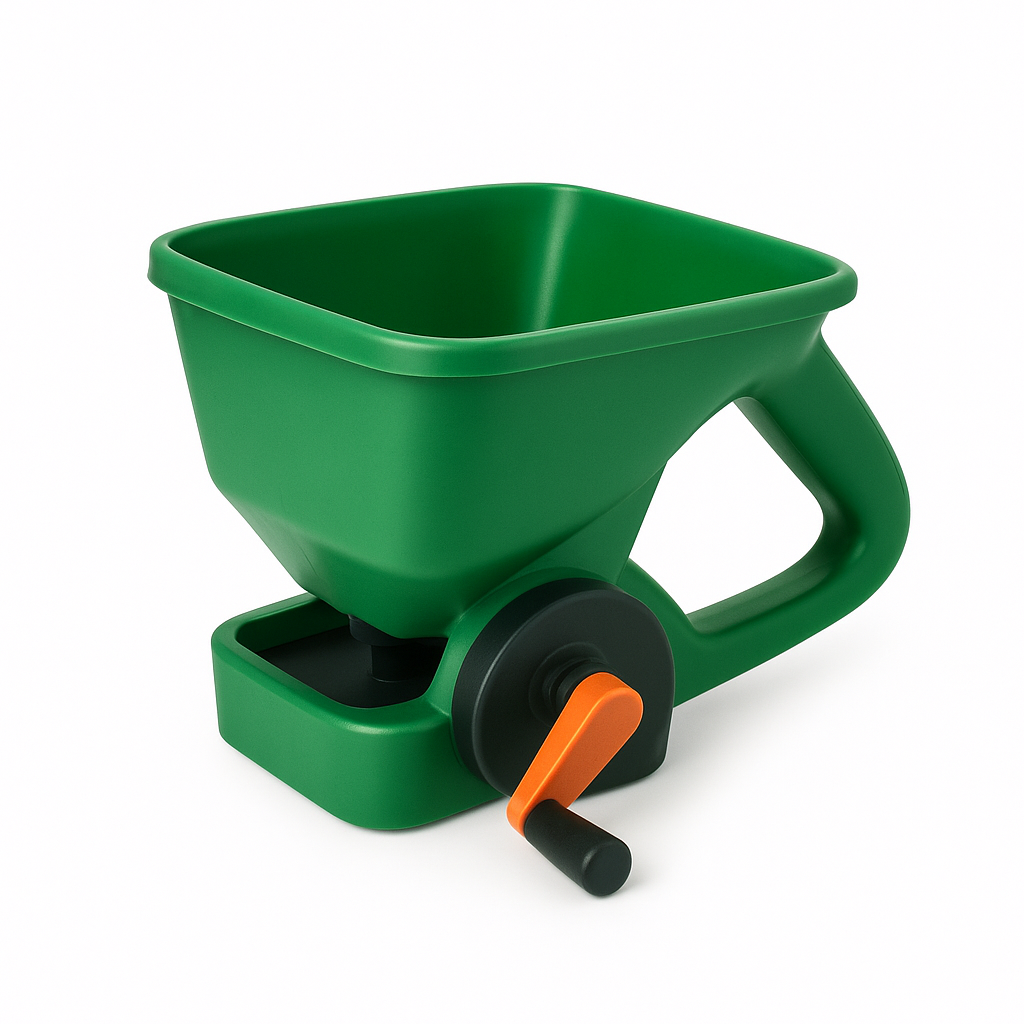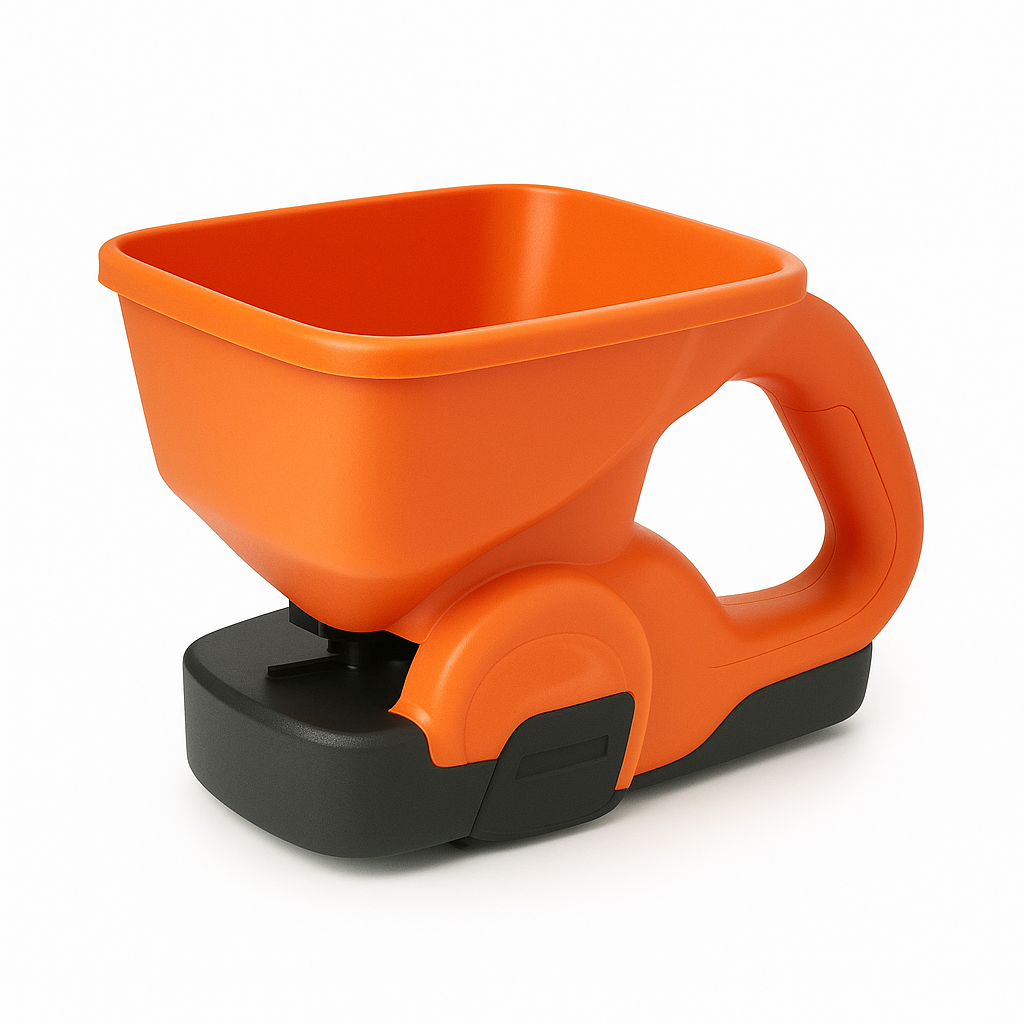
Electric vs Manual Handheld Fertiliser Spreaders: Which One’s Right for You?
Electric vs manual handheld spreaders, which one is right for your garden?. Whether you want to keep a urban lawn in top shape, or only got a tiny veggie garden ,tending to a lifestyle block in the country, getting the right handheld spreader can make all the difference. Fertiliser spreaders help you get even coverage—no more patchy grass or over-fertilised spots that get burned, which you usually get while doing it by hand, and it can save you a lot of money. But with so many types out there, where do you start?
Let’s break it down and take a good look at the two main types of handheld fertiliser spreaders—electric vs manual—to help you choose what’s right for your garden or small farm.
What Are Handheld Fertiliser Spreaders, and Why Choose Electric vs Manual?
You might be:
- Spot-feeding parts of your garden
- Spreading seed along tricky fence lines
- Salting icy walkways in winter
- Feeding potted plants or planter boxes
They’re popular among city gardeners with small lawns,veggie gardens and rural dwellers alike—especially for odd jobs where dragging out a big spreader feels like overkill.
If you’re looking for something with more capacity for larger areas, check out our guide to the best walk-behind fertiliser spreaders.
2. Manual Handheld Spreaders: The Classic Choice
How they work:
Manual handheld spreaders rely on—you guessed it—your hand and wrist. You fill the container, walk along your path, and turn a crank to spin the disk that broadcasts the product.
Pros:
Affordable: Manual spreaders are generally cheaper to buy upfront. Great for budget-conscious gardeners.
No batteries required: They’re always ready to go—no charging or battery replacements.
Lightweight and simple: Most are very light and don’t involve complicated settings.
Reliable in all weather: Since they don’t rely on motors, they’re good to go in damp or frosty weather (perfect for winter salt spreading).
Cons:
Wrist fatigue: Larger areas can wear out your hand and arm.
Uneven spread: You’ll need a steady rhythm to get even coverage.
Limited precision settings: Some models don’t allow for much adjustment in flow rate or width.
Harder for large gardens: If you’ve got a few acres or large lawn areas, you’ll be there a while.
Best for:
- Small lawns or veggie patches
- Urban homeowners
- Occasional use
- People who prefer low-tech tools
3. Electric Handheld Spreaders: The Powered Option
How they work:
Electric spreaders use battery power to spin the spreader disk automatically. You just walk and guide the unit—it does the hard work for you.

Pros:
Consistent spreading: With a steady motor-driven spread, coverage is usually more even.
Less effort: No cranking means less fatigue—especially helpful for those with limited grip strength or arthritis.
Custom settings: Many electric models have adjustable speeds or flow rates.
Time-saver: Great for covering medium-sized lawns quickly and efficiently.
Cons:
Battery dependence: You’ll need to keep batteries on hand or remember to recharge.
More expensive: Upfront cost is higher than manual models.
Weight can be heavier: Especially once loaded with fertiliser or seed.
Not ideal in wet conditions: Electronics and moisture don’t mix well.
Best for:
- Medium to large suburban lawns
- Frequent fertiliser users
- Gardeners who want speed and consistency
- Anyone with limited physical strength or mobility
4. Comparing the Two: What Should You Consider?
Here’s a quick side-by-side comparison to help make your decision easier:
| Feature | Manual Handheld Spreader | Electric Handheld Spreader |
| Cost | Lower upfront cost | Higher upfront cost |
| Ease of Use | Requires hand cranking | Push-button operation |
| Spread Consistency | Depends on user control | More even and consistent |
| Weight | Lightweight | Slightly heavier with batteries |
| Best Use Size | Small gardens, tight spots | Medium lawns, frequent spreading |
| Weather Tolerance | Works in any weather | Avoid rain or wet spreading |
Think about how often you spread fertiliser or seed, how much ground you cover, and how much energy you want to spend doing it.
5. Urban or Rural—Both Can Benefit
Whether you’re on a quarter-acre in town or a few paddocks out in the sticks, handheld spreaders offer surprising versatility.
For city folk:
- Manual spreaders are perfect for container gardens, balconies, and lawn edges.
- Electric ones speed up spring and autumn feeding without needing a shed full of tools.
For rural dwellers:
- Manual models are handy for throwing salt or fertiliser into hard-to-reach spots, or when you need to dose a few plants quickly.
- Electric spreaders are a great middle ground between tiny handhelds and bulky walk-behinds—especially when you just need a quick feed between rows of veg or around orchard trees.
Either way, you’ll want something reliable, ergonomic, and suited to your space.
6. Our Final Thoughts (and What’s Coming Next)
When it comes to handheld fertiliser spreaders electric vs manual, there’s no one-size-fits-all answer. Manual models are simple, affordable, and always ready. Electric spreaders offer ease, speed, and better consistency—but at a higher price.
Your ideal spreader depends on how often you use it, how much space you’re covering, and how much convenience matters to you.
Coming soon: Keep an eye out for our next blog, where we break down the Best Handheld Fertiliser Spreaders for 2025—we’ll share our top picks for both electric and manual models, and where you can find them online (with handy links, of course!).
Until then, happy spreading—whether it’s seeds, feed, or just a bit of weekend sunshine in your garden.
